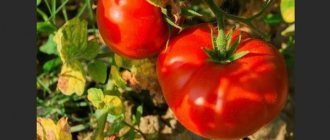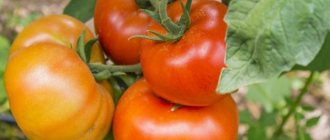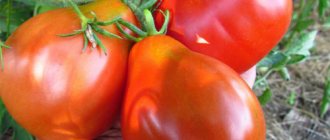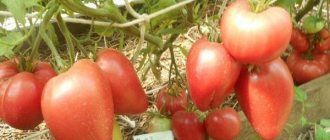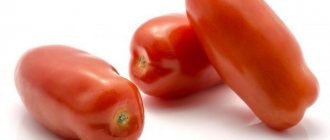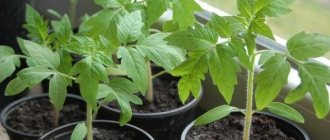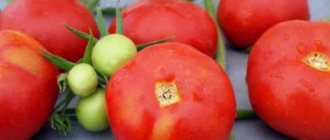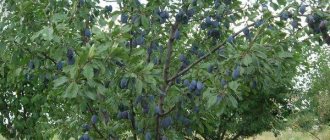Bright red, huge, fleshy? Tomato connoisseurs will definitely like Bear's Paw. The giant fruits amaze with their unprecedented size and excellent taste. This variety is impossible to resist.
| Height | Landing location | Ripening time | Fruit color | Fruit size | Origin | Fruit shape |
| Tall | Greenhouse, Open ground | Mid-early | Reds | Large | Variety | Flat-round |
Characteristics of tomato variety Bear's Paw
The Bear's Paw tomato is a large-fruited Russian variety. It was created by agro. Included in the State Register of the Russian Federation of breeding achievements approved for cultivation in 2005.
The tomato received its unusual name because of the shape of the leaves, which resemble a bear's paw.
The variety is suitable for cultivation both in open ground and in greenhouse conditions.
The vegetable crop is resistant to short droughts, but with regular watering it can produce more abundant harvests . The fruits themselves will be juicier and the taste will be more pronounced. Harvested tomatoes are well stored and transported.
The Bear's Paw variety is immune to the main diseases of this vegetable. To prevent infection with infections: verticillium, late blight, tobacco mosaic and fusarium wilt, preventive measures are taken.
Vegetable crops are sometimes attacked by aphids, slugs, Colorado potato beetles, mole crickets, whiteflies and spider mites.
Features of growing and caring for the variety
Despite the high immunity and adaptation to frost and drought, you can get a good harvest of Bear's Paw tomatoes by following planting technology, organizing proper care and timely watering. You need to know where to grow tomatoes, when is the best time to do it, how to prepare the soil and organize protection from pathogens and pests.
Planting time for seedlings
The quality of the harvest and the quantity of harvested fruits depend on many factors, but your main attention should be paid to planting seedlings. In order for the sprouts to actively develop, it is necessary, first of all, to prepare the soil for future seedlings
To do this, it is better to use a mixture of turf soil and humus, and you need to prepare the soil for planting in the fall.
Important! Much attention should be paid to the choice of seeds. The ideal solution is to purchase ready-made seeds, grown in open ground and pre-disinfected
If you grew the seeds yourself, for prevention, soak them in a solution of potassium permanganate (potassium permanganate) or hydrogen peroxide. This will help prevent the development of diseases and pests, while stimulants will help accelerate growth.
The seeds are sown in furrows 1.5-2 centimeters deep, after which they are watered and covered with plastic film. With the appearance of two leaves, the sprouts are picked and planted in separate containers. Young seedlings are placed in a well-lit place, and in case of lack of light, additional lamps are installed. At this stage, the first feeding of plants is performed using nitrogen-containing fertilizers that stimulate the growth of green mass. The second feeding is done immediately before planting in the ground. Hardening will also help to increase the immunity of plants, and shortly before planting in a permanent place, already grown seedlings should be exposed to fresh air, and the time young plants spend in natural conditions should be gradually increased.
Rules for planting seedlings and ripening speed
Planting seedlings begins in mid-March or in April if you are going to grow tomatoes in a greenhouse. Transplanting seedlings can be done as early as mid-May, or when the soil has completely warmed up. No more than 3 bushes are planted per 1 square meter, because dense thickets create ideal conditions for the development of fungus and the appearance of pests, the fight against which in this case becomes more difficult. Given the constant growth, the bushes, and to get a good harvest it is enough to leave two stems, are tied to supports, while the side shoots and lower foliage are removed.
Watering should be moderate, for which you need to use only warm water, and it is better to do this in the evening. One bush requires approximately 3 liters of water, and during the flowering period the plant requires up to 5 liters of “life-giving” moisture. The soil should not be hard, for which purpose it must be loosened after watering; do not forget to also remove weeds. Over the entire ripening period, 3-4 feedings will be needed. If you follow the specified sequence, organize proper care, including fertilizing and watering, you can get your first harvest in 100-110 days.
Remember! Better results can be obtained by alternating mineral and organic fertilizers. During the flowering period, to stimulate the ovary, you can spray a solution of boric acid at the rate of 1 g of the substance per liter of water.
Resistance to diseases and adverse conditions
We can say that Bearpaw tomatoes have good immunity to diseases such as late blight and tobacco mosaic, but do not forget that it is easier to prevent a disease than to treat it. Therefore, preventive measures will only be beneficial. Again you will need potassium permanganate, the hot solution of which should be poured over the places where the seedlings are planted. Blink will not appear in the greenhouse if you organize periodic ventilation of the room, and in the open ground mulching the soil with peat, straw or humus will help.
As for insect pests, tomatoes are primarily threatened by the Colorado potato beetle, aphids, mucus and mole crickets. Coping with these garden pests is the gardener’s primary task, and in this fight all methods are good. “Ammonia,” or a solution of ammonia, will kill slug and Colorado larvae, but aphids are afraid of soap solution. Tomatoes can be treated with chemicals, but only before fruiting begins. After this, mainly folk methods are used - onion peels, a decoction of celandine herb, and other “grandmother’s” methods will also help.
To get a good harvest, you need to use high-quality seeds. The most productive varieties are possible. Large selection of varieties for every taste.
